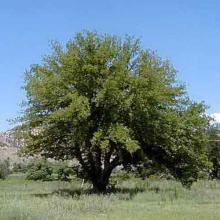Morus rubra
Common name:
Red mullberry
Genus:
Morus
Family:
Moraceae
Order:
Rosales
Morus rubra
Common name:
Red mullberry
Genus:
Morus
Family:
Moraceae
Order:
Rosales
Morus rubra
Common name:
Red mullberry
Genus:
Morus
Family:
Moraceae
Order:
Rosales
Genus (Plantae): Morus
Morus, a genus of flowering plants in the family Moraceae, consists of diverse species of deciduous trees commonly known as mulberries, growing wild and under cultivation in many temperate world regions. Generally, the plant has three main species ostensibly named for the fruit color of the best-known cultivar: white, red, and black mulberry (Morus alba, rubra, and nigra, respectively), with numerous cultivars, but more than 200 species are identified in taxonomy. The name “white mulberry” came about because the first specimens named by European taxonomists were a cultivated mutation prized for their white fruit, but wild trees bear black fruit like other mulberries. White mulberry is native to South Asia, but is widely distributed across Europe, Southern Africa, South America, and North America. It is regarded as an invasive species in Brazil and the United States.
Description
Mulberries are fast-growing when young, and can grow to 24 meters (80 ft) tall. The leaves are alternately arranged, simple, and often lobed and serrated on the margin. Lobes are more common on juvenile shoots than on mature trees. The trees can be monoecious or dioecious.
The mulberry fruit is a multiple, about 2–3 cm (3⁄4–1 1⁄4 in) long. Immature fruits are white, green, or pale yellow. The fruit turns from pink to red while ripening, then dark purple or black, and has a sweet flavor when fully ripe.
Reference: Wikipedia

